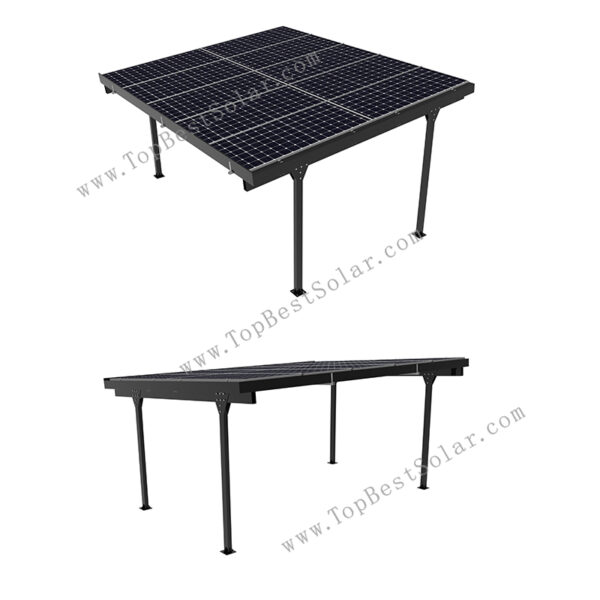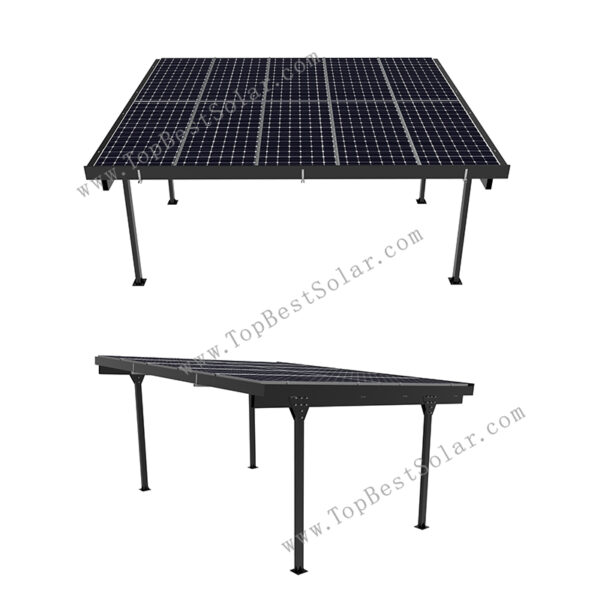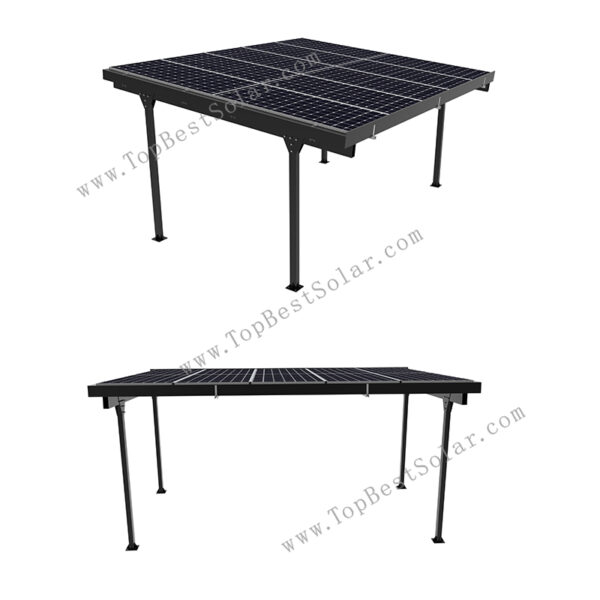Q1: What is a solar carport structure?
A solar carport structure is a specialized outdoor structure that shelters vehicles (cars, SUVs, trucks) while integrating solar panels on its roof. Unlike traditional carports, it combines shade and protection for vehicles with renewable energy generation—specifically, it feeds electricity to your home, business, or the grid. Additionally, it typically consists of a sturdy frame (steel, aluminum, or wood), solar panels, mounting brackets, and wiring for energy transfer.
Q2: What are the common design options for a solar carport structure?
Solar carport structures offer flexible designs to fit different needs. First, residential solar carport structures feature compact sizes (1-2 vehicle capacity), low-profile frames, and aesthetic designs that match home exteriors. Second, commercial solar carport structures are larger, high-capacity designs (10+ vehicles) for parking lots, offices, or retail centers—they often use reinforced steel frames to support heavier solar panel loads. Finally, custom designs include adjustable heights (for tall vehicles like trucks), integrated lighting, or rainwater collection systems. Moreover, most designs comply with local building codes to ensure safety.
Q3: How much does a solar carport structure cost?
Costs vary based on size, materials, and solar panel quality. For instance, residential solar carport structures cost $10,000–$25,000 (for 1-2 vehicles, including 4-8 solar panels, frame, and installation). On the other hand, commercial solar carport structures range from $50,000 to $200,000+ (for 10+ vehicles, with 20+ panels and heavy-duty steel frames). Additionally, key cost factors include solar panel efficiency (higher-efficiency panels cost more), frame material (steel is more expensive than aluminum, which is pricier than wood), and labor (complex installations add 15-20% to total cost). Fortunately, many regions offer tax credits or rebates that offset 20-30% of the cost.
Q4: How long does it take to install a solar carport structure?
Installation timelines depend on size and complexity. Specifically, residential models take 3–7 days to install, including site prep, frame assembly, panel mounting, and wiring. On the other hand, commercial models require 2–4 weeks—this is because they need permits, a larger crew, and coordination with electricians for grid connection. Notably, permit approval (from local authorities) typically adds 1–2 weeks, so we recommend starting the application process early.
Q5: Is a solar carport structure durable?
Yes—solar carport structures are built for long-term outdoor use. First, for frame durability, steel frames resist rust (with galvanization) and can withstand wind speeds up to 120 mph; aluminum frames are lightweight and corrosion-resistant, making them ideal for coastal areas. Second, solar panels have a lifespan of 25–30 years, and most manufacturers offer warranties for 20+ years. Third, quality structures handle snow loads (up to 50 lbs/sq ft) and heavy rain, and they include proper drainage to prevent water pooling on the roof.
Q7: Do solar carport structures require maintenance?
Maintenance is minimal. First, perform regular checks: inspect the frame for loose bolts twice a year and clean solar panels 3–4 times a year to remove dirt and dust—this step improves energy efficiency by 5-10%. Second, for long-term care, replace worn wiring every 10–15 years and reapply anti-rust coating to steel frames every 5–7 years in humid areas. Moreover, most solar panel manufacturers include maintenance guides, and you only need professional servicing for major issues (e.g., storm damage).
Q8: Can a solar carport structure connect to the grid?
Yes—most solar carport structures are grid-tied. Specifically, the panels generate excess electricity, which you can send to the local grid; in return, your utility company gives you credits via net metering. However, off-grid options are also available (with battery storage) for areas with unreliable grid access, though they add 30-40% to the total cost. Finally, grid connection requires approval from your utility provider and compliance with local electrical codes.









